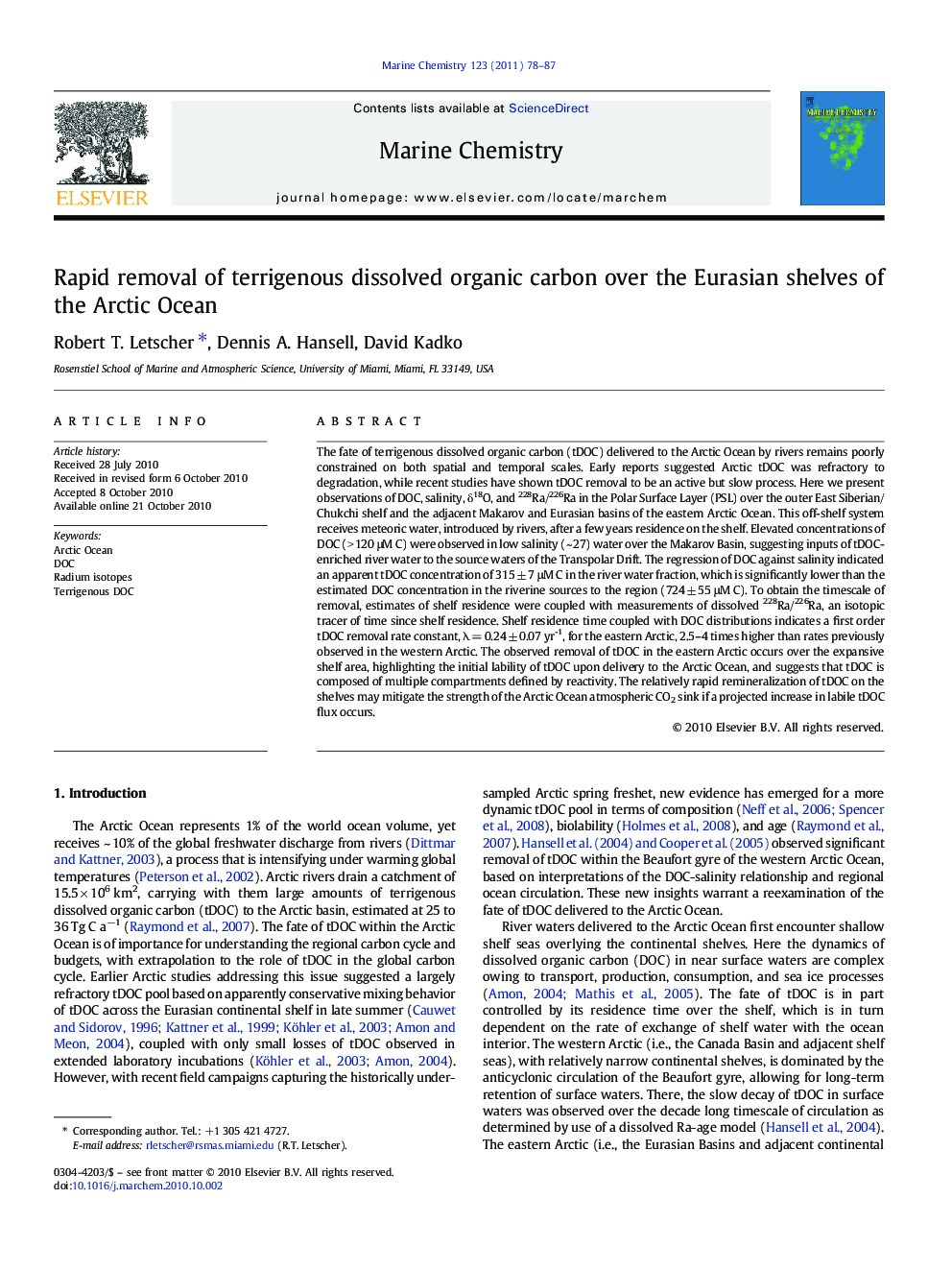| Article ID | Journal | Published Year | Pages | File Type |
|---|---|---|---|---|
| 1263085 | Marine Chemistry | 2011 | 10 Pages |
The fate of terrigenous dissolved organic carbon (tDOC) delivered to the Arctic Ocean by rivers remains poorly constrained on both spatial and temporal scales. Early reports suggested Arctic tDOC was refractory to degradation, while recent studies have shown tDOC removal to be an active but slow process. Here we present observations of DOC, salinity, δ18O, and 228Ra/226Ra in the Polar Surface Layer (PSL) over the outer East Siberian/Chukchi shelf and the adjacent Makarov and Eurasian basins of the eastern Arctic Ocean. This off-shelf system receives meteoric water, introduced by rivers, after a few years residence on the shelf. Elevated concentrations of DOC (> 120 μM C) were observed in low salinity (~ 27) water over the Makarov Basin, suggesting inputs of tDOC-enriched river water to the source waters of the Transpolar Drift. The regression of DOC against salinity indicated an apparent tDOC concentration of 315 ± 7 μM C in the river water fraction, which is significantly lower than the estimated DOC concentration in the riverine sources to the region (724 ± 55 μM C). To obtain the timescale of removal, estimates of shelf residence were coupled with measurements of dissolved 228Ra/226Ra, an isotopic tracer of time since shelf residence. Shelf residence time coupled with DOC distributions indicates a first order tDOC removal rate constant, λ = 0.24 ± 0.07 yr-1, for the eastern Arctic, 2.5–4 times higher than rates previously observed in the western Arctic. The observed removal of tDOC in the eastern Arctic occurs over the expansive shelf area, highlighting the initial lability of tDOC upon delivery to the Arctic Ocean, and suggests that tDOC is composed of multiple compartments defined by reactivity. The relatively rapid remineralization of tDOC on the shelves may mitigate the strength of the Arctic Ocean atmospheric CO2 sink if a projected increase in labile tDOC flux occurs.
Research Highlights►Non-conservative tDOC behavior results in net DOC removal across Eurasian Arctic Shelves.►tDOC first order decay constant λ = 0.24 yr−1 for eastern Arctic shelves.►Differing tDOC decay constants between shelves and interior ocean suggest multi-compartment model for tDOC lability.►Remineralization of tDOC over Arctic shelves may mitigate strength of Arctic atmospheric CO2 sink.
